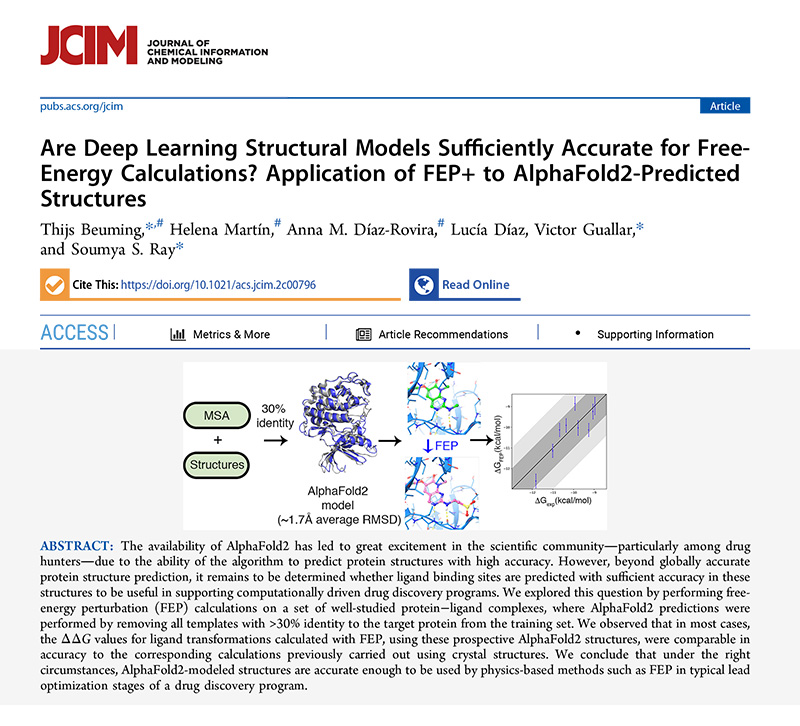Co-authored by Thijs Beuming, Ph.D., Principal Consultant, “Are Deep Learning Structural Models Sufficiently Accurate for Free-Energy Calculations? Application of FEP+ to AlphaFold2-Predicted Structures,” was recently published in the Journal of Chemical Information and Modeling (JCIM).
Published in collaboration with researchers from RA Capital Management and Nostrum Biodiscovery, the study demonstrates the successful use of AlphaFold protein structures in structure-based lead optimization studies.
Dr. Beuming leads the In Silico Drug Discovery Services at LBG and has more than 15 years of experience applying computational biophysics, computational chemistry, bioinformatics, and cheminformatics to problems in biology and drug discovery in academia and industry.
He spent more than a decade at Schrödinger, Inc., the global leader in providing computational chemistry and molecular modeling solutions to the biopharmaceutical and materials industries. He held a leading role in the Application Science department at Schrödinger, where he managed project and customer support for clients in the New York, New Jersey, and Pennsylvania regions.
In addition, Dr. Beuming has made key contributions to novel methodologies to key problems in computational chemistry, including the study of protein flexibility, protein solvation, thermodynamic binding affinity calculations, and small molecule and peptide docking. His work has been documented in more than 50 peer-reviewed articles and reviews.
“Thijs and his collaborators’ work demonstrates practical applications of deep learning to the field of drug discovery,” says Joshua Speidel, Ph.D., Managing Partner, LBG. “Their work has the potential to dramatically expand the relevance of computationally driven lead optimization where available data have previously limited efforts, and it paves the way for identifying new drug treatments for important diseases.”
View the paper here.
To learn more, visit Journal of Chemical Information and Modeling (acs.org).